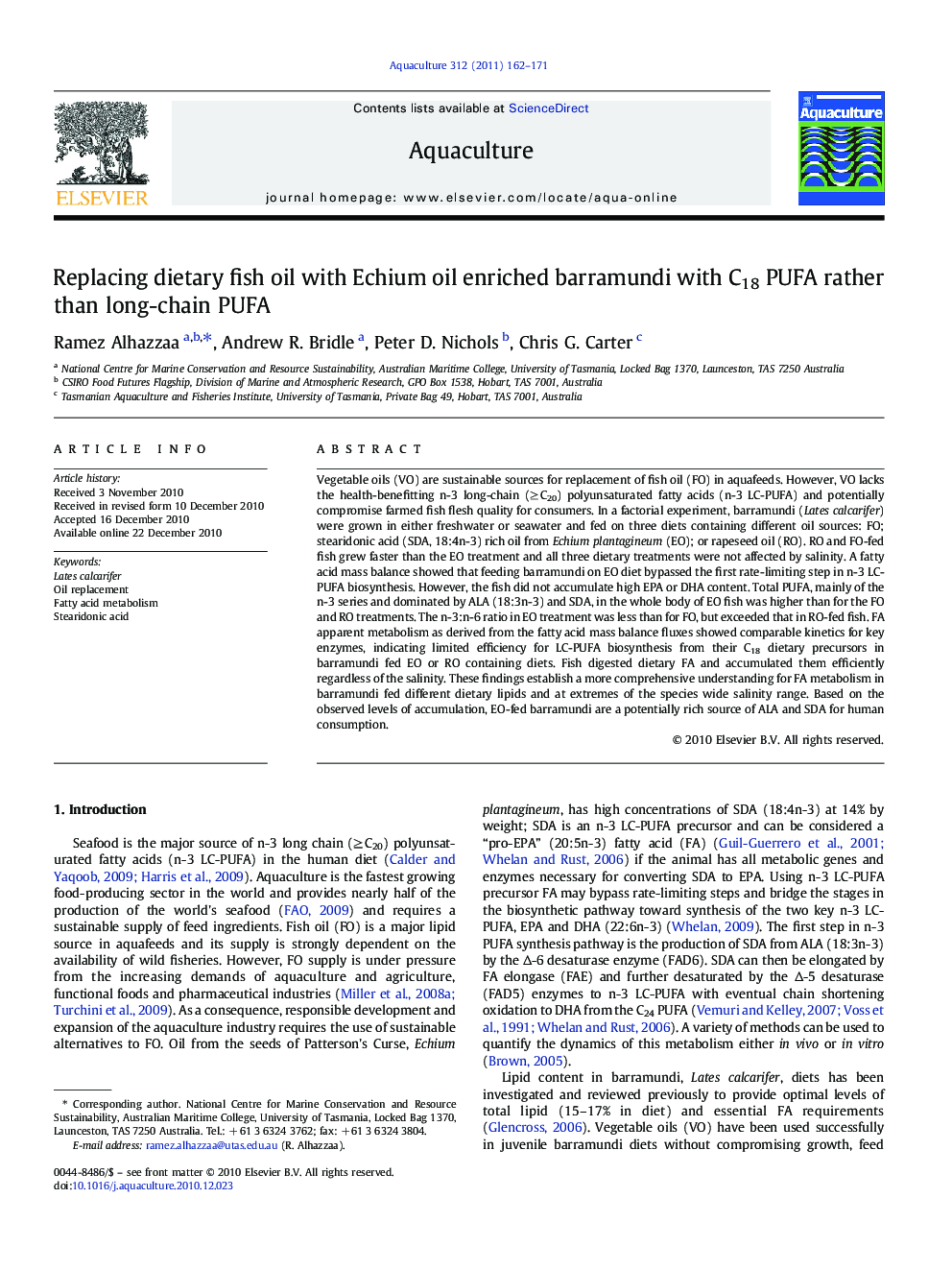| Article ID | Journal | Published Year | Pages | File Type |
|---|---|---|---|---|
| 2423301 | Aquaculture | 2011 | 10 Pages |
Vegetable oils (VO) are sustainable sources for replacement of fish oil (FO) in aquafeeds. However, VO lacks the health-benefitting n-3 long-chain (≥ C20) polyunsaturated fatty acids (n-3 LC-PUFA) and potentially compromise farmed fish flesh quality for consumers. In a factorial experiment, barramundi (Lates calcarifer) were grown in either freshwater or seawater and fed on three diets containing different oil sources: FO; stearidonic acid (SDA, 18:4n-3) rich oil from Echium plantagineum (EO); or rapeseed oil (RO). RO and FO-fed fish grew faster than the EO treatment and all three dietary treatments were not affected by salinity. A fatty acid mass balance showed that feeding barramundi on EO diet bypassed the first rate-limiting step in n-3 LC-PUFA biosynthesis. However, the fish did not accumulate high EPA or DHA content. Total PUFA, mainly of the n-3 series and dominated by ALA (18:3n-3) and SDA, in the whole body of EO fish was higher than for the FO and RO treatments. The n-3:n-6 ratio in EO treatment was less than for FO, but exceeded that in RO-fed fish. FA apparent metabolism as derived from the fatty acid mass balance fluxes showed comparable kinetics for key enzymes, indicating limited efficiency for LC-PUFA biosynthesis from their C18 dietary precursors in barramundi fed EO or RO containing diets. Fish digested dietary FA and accumulated them efficiently regardless of the salinity. These findings establish a more comprehensive understanding for FA metabolism in barramundi fed different dietary lipids and at extremes of the species wide salinity range. Based on the observed levels of accumulation, EO-fed barramundi are a potentially rich source of ALA and SDA for human consumption.
